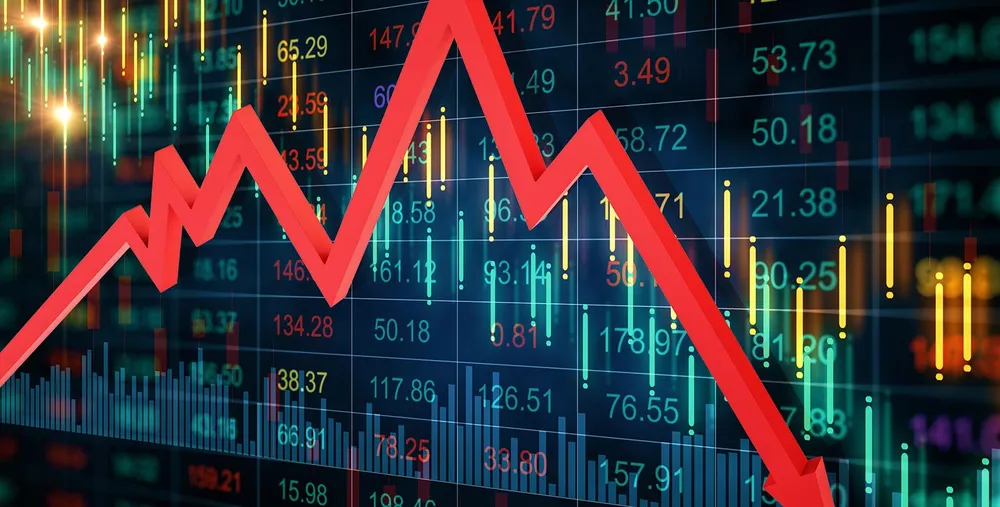
In 2021, despite a strong net selling by foreign investors, domestic capital inflow was still favorable and even a factor for the spectacular growth of the stock market. The current most ominous signs are related to capital flow not withdrawing, even though the stock prices have dropped very low.
Liquidity exhausted
Liquidity is still the focus as the market has continued to shrink since May. The main reasons can be attributed to mistakes made in securities and corporate bonds issuances by a few enterprises. Besides this, pressure of tight monetary policy from global and Vietnamese central banks was also affected. Along with this is the impending maturity date of corporate bonds from previous issuances accompanied with risk aversions, which has put pressure on investors and has had an impact on financial institutions and stock issuers.
This situation has collectively led liquidity blockage in the capital market, which has had a strong impact on the stock market. Moreover, cash flow in the stock market continues to weaken due to the constantly rising deposit interest rates, with investors remaining overly cautious. According to Saigon Securities Company (SSI), the average value per session of HoSE in October was only VND 9,200 bln, down 17% compared to VND 11,700 bln in the previous month. The transaction value in October was 48% lower than the average level of VND 18,000 bln in the first ten months of the year. The liquidity in 2022 on HoSE is also low compared to an average of VND 21,700 bln per session in 2021.
Liquidity continues to decrease as investors, domestic organizations, and foreign investors withdraw capital. According to statistics of the Rong Viet Securities Company (VDSC), domestic organizations have strongly sold VND 7,697 bln in October, double the level in March, thereby increasing the accumulated net selling level from the beginning of the year to VND 18,739 bln. Similarly, foreign investors continued net selling for the second consecutive month with value of VND 1,190 bln. However, more worrisome is the fact that foreign capital inflow has begun to return to some Asian stock markets, but Vietnam still witnessed another month of net withdrawal of upto USD 81 mln in October.
VN Index plummets
Under these negative conditions, the VN Index in October once again recorded a sharp decline, when the market lost 9.2% compared to the previous month. Other sub-indexes were even worse as VN30, VN Midcap and VN Smallcap fell 10.9%, 11.9%, and 15.8%, respectively. Compared with regional index, Hang Seng, down by 15.9%, and VN Index, down by 9.2%, are the two indexes that recorded the strongest decline in the world. Other remaining stock indices all recovered strongly after the sharp fall in September, such as S&P 500 was up by 8%, KOSPI was up by 6.4%, Nikkei 225 was up by 6.4%, and STOXX 600 was up by 6.3%.
According to VDSC, the drop in October caused stock prices to fall to new low levels compared to the beginning of 2022. Profit distribution of the whole market also shifted to the left more than last month, when 90% of stocks recorded a decrease in price and 40% of stocks discounted more than 15%. Among the industries based on the Global Industry Classification Standard (GICS), all continued to record a second consecutive month of losses.
Specifically, there are seven out of ten industry groups that decreased more than the VN Index, in which materials were the hardest hit industry with a decrease of up to 22.4%. In this industry, the giant of the steel industry, which is the leading HPG, has depreciated with a decrease of more than 26%. This was followed by GVR, down by 25.3%, and HSG, down by 23.0%.
However, the financial industry, which is down by 9.9%, was the group that contributed the most to the VN Index decline when it had a large capitalization rate. For instance, TCB was down by 24.3%, VPB was down by 9.2%, MBB was down by 11.5%, and STB was down by 21.6%. These were the stocks with the most negative impact on the banking industry on the market index.
Operational challenges
The macro data released for October by the General Statistics Office has provided a clearer picture which shows Vietnam is in trend with the global economy. This is seen both in the production sector as well as the consumer sector, which is no longer under inflation pressure or impact from other international factors.
In addition, fluctuation in the money markets, corporate bonds, and exchange rates, causing the risk of macro imbalance, were also mentioned more often. In short, the manufacturing industry faced many difficulties because of deceleration of the global economy which became more obvious in the manufacturing industry when the Purchasing Manager Index (PMI) and exports, all decelerated in October.
However, the estimated import and export data in October was not positive. Exports increased at the slowest rate since September 2021, only increasing by 4.5% over the same period. The slow pace of imports is also a worrisome factor, as it shows a reduction in imports of intermediate products due to weak export orders.
Macroeconomic variables in the short and medium term, for the next three to six months, are showing several challenges in operations by the Government and the State Bank of Vietnam in order to maintain a favorable environment. The stable macro environment and the next policy steps which continue to tighten or support financial conditions in the market, will also be factors affecting the selection of investment capital flow into Vietnam. Hence, the next policy steps from the Government and the State Bank of Vietnam in handling and supporting the corporate bonds market will be of interest to domestic and foreign investors.




















